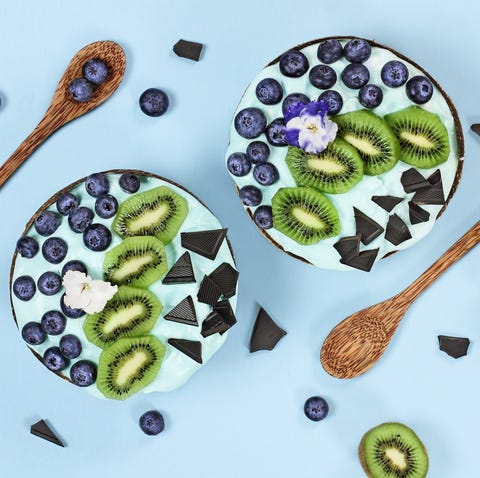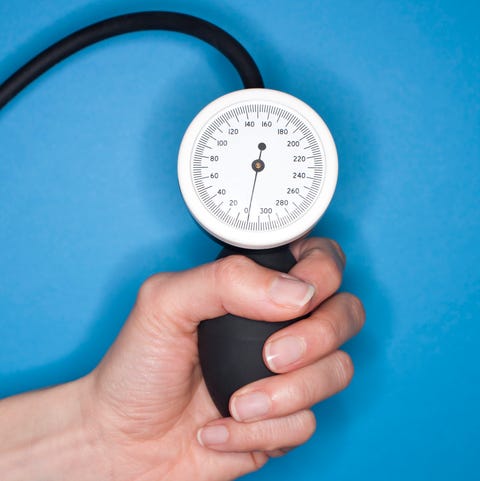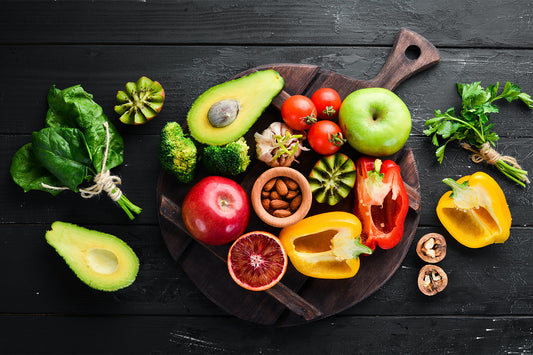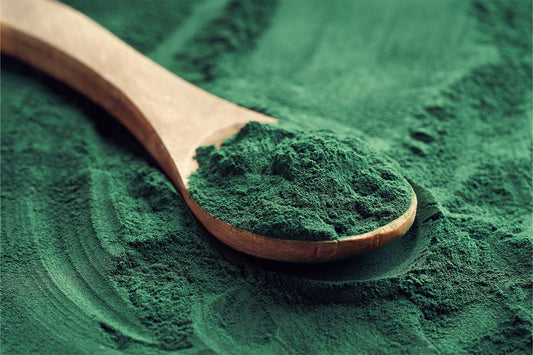"It's something to really consider—especially if you're not a fan of fish."


Those bright blue smoothies and puddings that have taken over your Instagram feed aren’t just pretty to look at. They also pack a serious health punch, thanks to the same superfood: algae.
The term algae actually refers to a family of aquatic plants that's estimated to include anywhere from 30,000 to more than 1 million species. You've likely heard of some of the more popular varieties, such as spirulina, chlorella, nannochloropsis, and seaweed, and for good reason. Not only are they tasty—and turn ho-hum drinks a vibrant blue hue— but a growing body of evidence suggests they're also very good for you.
Here’s a look at the proven benefits of algae and why you might want to add it to your diet—especially if you don't eat a ton of fatty fish. (More on that in a sec!) Plus, some creative and easy ways to get your fill.
The health benefits of algae
It supports heart health.

Let’s start by talking about the incredible benefits of the omega-3s found in fatty fish like salmon and tuna. (Fun fact: Fish get omega-3s from the algae and seaweed they eat.) These essential fatty acids are thought to support heart health, brain health, joint flexibility and even support emotional wellness.
The body can only use about 15% of the omega-3s found in most plants, but algae is the exception.
If you’re not a fan of fish (or only eat it once in a while), you might aim to get your omega-3s from plant-based sources like walnuts or flaxseeds. The only problem? The omega-3s found in most plants, while good for you, aren’t nearly as potent as the ones found in fish, explains registered dietitian Isabel Smith. In fact, the body can only use about 15 percent of the omega-3s found in most plants, notes the NIH.
But algae is the exception. It’s a plant-based source of omega-3s, and unlike nuts and seeds, the fatty acids within it are easy for the body to absorb. In fact, research has shown that the omega-3s found in certain species of algae, such as nannochloropsis and spirulina, have the same bioavailability as those found in salmon.
That’s why Smith is such a big fan. “I often recommend algae-based omega-3s for people who are vegetarian or vegan, for those with fish allergies, or anyone who has trouble getting enough omega-3s,” she says.
It can help support your overall health and wellness.

If you’re looking for ways to support your heart health, consider algae your ally. Early research shows that taking 4.5 grams per day of blue-green algae by mouth for six weeks may help support an overall healthy blood pressure. Research also suggests that consuming nannochloropsis may boast antioxidant properties that could could help maintain cholesterol levels already within the healthy range, which can help support overall heart health.
Algae can also play a role in supporting healthy blood sugar, too. One study found that spirulina supplementation may help support proper insulin sensitivity in the body, and chlorella may support blood sugar levels in the long run.
It might support your immune system.

Research suggests that spirulina contains compounds that compounds that have soothing properties which may support the immune system during seasonal allergies. Another study found that healthy adults experienced immune system support after taking chlorella for eight weeks.
It could support your feelings of energy.

In addition to being loaded with minerals, algae is also a good source of B-vitamin. Those nutrients play a key role in turning food into energy, giving you the fuel you need to get through your day with a little bounce in your step.
It can help provide key nutrients.

Omega-3s and B-vitamins aren’t the only reason you might want to add algae to your diet. Algae like spirulina, chlorella, and nannochloropsis are rich in minerals like iron, magnesium, zinc, and potassium, which can be tough to get enough of on a given day.
And get this: Algae is also surprisingly high in protein. You’ll get 4 grams from just one tablespoon of spirulina—the same as what you’d find in half a cup of low-fat milk.
Easy ways to add algae to your diet
Up for giving algae a try, but aren’t quite sure how to get started? We get it. Chlorella and spirulina are usually found in powdered form, and they can be a little intimidating if you’ve never used them before.
But there are a bunch of other tasty ways to get your fill of these powerful sea veggies. (Just be sure to get the green light with your doctor first. As with all supplements, algae has the potential to interact with certain medications.)
Here are a few of Smith’s favorite ideas:
Add it to a smoothie: Despite its in-your-face color, algae has a mild flavor that works well with most fruits and veggies. Try adding one or two tablespoons to your other ingredients before blending, Smith recommends.
Mix it into salad dressings: Turn any vinaigrette into a nutritional powerhouse by whisking one to two tablespoons of algae into your favorite homemade dressing.
Sprinkle it over popcorn: Try swapping your usual grated Parmesan for a teaspoon or two of algae.
Rather not use a powered algae? Ask your doctor if an algae capsule or soft gel is right for you. One to consider: iWi's Algae-Based Omega-3 Daily Support, which contains a proprietary strain of nannochloropsis.
















